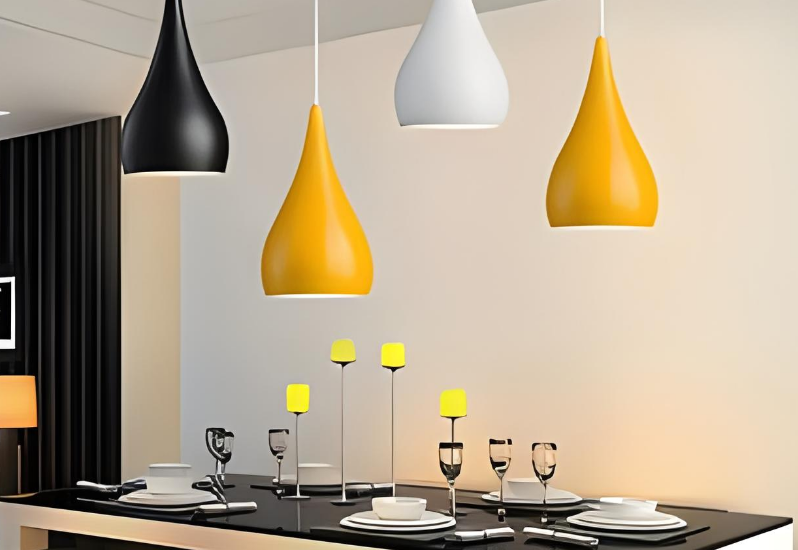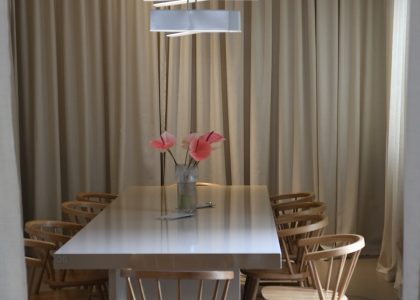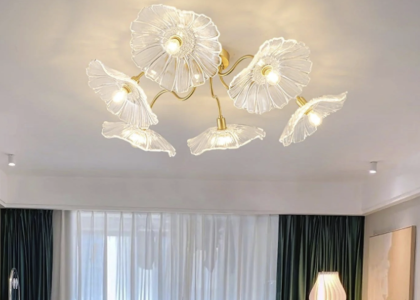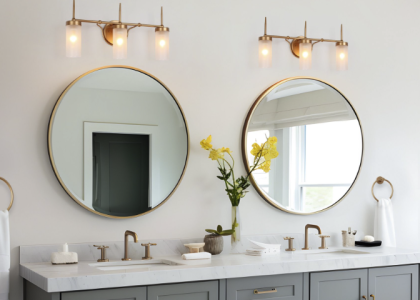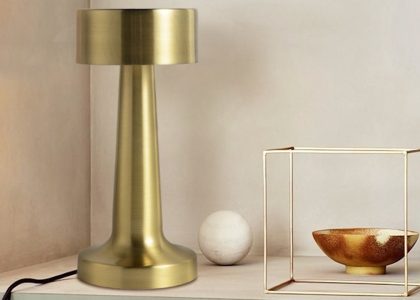When it comes to creating the perfect ambiance in your dining room, lighting plays a crucial role. The right lighting can enhance the dining experience, setting the mood and creating a warm and inviting atmosphere. Whether you’re hosting a formal dinner party or enjoying a casual meal with family, the lighting in your dining room can make all the difference.sevildesigns
The importance of lighting in the dining room goes beyond just providing illumination. It can also be used to highlight focal points in the room, such as artwork or architectural features. Additionally, the right lighting can make a small space feel larger and more open, or create a cozy and intimate atmosphere in a larger room.
Types of Lighting Fixtures for Your Dining Room
There are several types of lighting fixtures that are commonly used in dining rooms. Each type has its own unique style and functionality, allowing you to choose the perfect fixture for your space.
Chandeliers are a popular choice for dining rooms, as they add elegance and sophistication to any space. They come in a variety of styles and sizes, allowing you to find the perfect chandelier to match your decor.
Pendant lights are another great option for dining rooms. They hang from the ceiling and provide focused light over the dining table. Pendant lights come in a wide range of styles, from modern and sleek to rustic and vintage.
Wall sconces are a versatile option for dining rooms, as they can be used to provide both ambient and task lighting. They can be mounted on the wall above a buffet or sideboard, or on either side of a mirror or artwork.
Track lighting is a popular choice for modern dining rooms. It consists of multiple light fixtures mounted on a track, allowing you to direct light where it’s needed most. Track lighting is often used to highlight artwork or architectural features in the dining room.
Recessed lighting is another option for dining rooms, particularly for those with low ceilings. Recessed lights are installed into the ceiling, providing a sleek and minimalist look. They can be used to provide general illumination or to highlight specific areas of the room.
Choosing the Right Size and Style of Lighting Fixture
When choosing a lighting fixture for your dining room, there are several factors to consider. The size and style of the fixture should be chosen based on the size and style of your dining room.
First, consider the size of your dining room. A small dining room may require a smaller fixture, while a larger dining room can accommodate a larger fixture or multiple fixtures. It’s important to choose a fixture that is proportionate to the size of the room, as an oversized or undersized fixture can throw off the balance of the space.
Next, consider the style of your dining room. If you have a traditional or formal dining room, a chandelier may be the perfect choice. For a more modern or contemporary space, pendant lights or track lighting can add a sleek and stylish touch. Wall sconces can work well in any style of dining room, as they come in a variety of styles and finishes.
It’s also important to consider the height of your ceiling when choosing a lighting fixture. A high ceiling may require a longer chain or rod for hanging a chandelier or pendant light, while a low ceiling may require a flush mount or semi-flush mount fixture.
How to Determine the Right Height to Hang Your Dining Room Lighting
The height at which you hang your dining room lighting is crucial for both functionality and aesthetics. Hanging your lighting fixtures at the right height can ensure that they provide adequate illumination for the dining table, while also creating a visually pleasing look.
When it comes to hanging chandeliers and pendant lights, there are some general guidelines to follow. For chandeliers, the bottom of the fixture should be approximately 30 to 36 inches above the dining table. This allows for enough clearance for people to sit comfortably at the table without hitting their heads on the fixture.
For pendant lights, the bottom of the fixture should be approximately 28 to 34 inches above the dining table. This height provides a similar clearance as chandeliers, while also allowing for a more intimate and cozy atmosphere.
It’s important to note that these are just general guidelines, and the height at which you hang your lighting fixtures may vary depending on the size and style of your dining room. It’s always a good idea to consult with a professional or follow the manufacturer’s recommendations when hanging your lighting fixtures.
When hanging your lighting fixtures, it’s also important to avoid some common mistakes. One common mistake is hanging the fixture too high, which can make the room feel cold and impersonal. Another mistake is hanging the fixture too low, which can obstruct views and create a cramped feeling in the room. It’s important to find the right balance between functionality and aesthetics when hanging your dining room lighting.
The Benefits of Dimmer Switches in Your Dining Room
Dimmer switches are a great addition to any dining room, as they allow you to control the level of light in the space. They can enhance the dining experience by creating a warm and inviting atmosphere, and they also offer energy-saving benefits.
One of the main benefits of dimmer switches is that they allow you to set the mood in your dining room. Whether you’re hosting a formal dinner party or enjoying a casual meal with family, dimming the lights can create a more intimate and cozy atmosphere. Dimmer switches also allow you to adjust the lighting throughout the meal, depending on the time of day or the desired ambiance.
In addition to setting the mood, dimmer switches also offer energy-saving benefits. By dimming the lights, you can reduce energy consumption and extend the life of your light bulbs. This can help lower your energy bills and reduce your carbon footprint.
Energy-Efficient Lighting Options for Your Dining Room

If you’re looking to make your dining room more energy-efficient, there are several lighting options to consider. LED lighting is one of the most energy-efficient options available, as it uses up to 80% less energy than traditional incandescent bulbs. LED bulbs also last much longer than traditional bulbs, reducing the need for frequent replacements.
Another energy-saving option is to use energy-saving bulbs, such as compact fluorescent bulbs or halogen bulbs. These bulbs use less energy than traditional incandescent bulbs and can help lower your energy bills.
When choosing energy-efficient lighting options for your dining room, it’s important to consider the color temperature of the bulbs. Warm white or soft white bulbs are often preferred for dining rooms, as they create a warm and inviting atmosphere. Cool white or daylight bulbs can create a brighter and more energizing atmosphere, which may be more suitable for breakfast nooks or informal dining areas.
How to Coordinate Your Dining Room Lighting with Your Decor
To create a cohesive look in your dining room, it’s important to coordinate your lighting fixtures with the decor of the space. This can be done by choosing fixtures that complement the style and color scheme of the room.
If you have a traditional or formal dining room, a crystal chandelier can add a touch of elegance and sophistication. For a more modern or contemporary space, pendant lights with clean lines and sleek finishes can create a stylish and minimalist look.
When choosing the finish of your lighting fixtures, consider the other finishes in the room, such as the hardware on your furniture or the color of your walls. Matching the finishes can create a cohesive and polished look in the space.
It’s also important to consider the color temperature of the light emitted by your fixtures. Warm white or soft white bulbs can create a cozy and inviting atmosphere, while cool white or daylight bulbs can create a brighter and more energizing atmosphere. Choose the color temperature that best complements the color scheme and mood of your dining room.
Tips for Creating a Warm and Inviting Atmosphere with Lighting
To create a warm and inviting atmosphere in your dining room, it’s important to use lighting strategically. Here are some tips for using lighting to create the perfect ambiance:
– Use multiple light sources: Instead of relying on a single overhead light, use multiple light sources to create layers of light in the room. This can include a combination of chandeliers, pendant lights, wall sconces, and table lamps. By using multiple light sources, you can create a more dynamic and visually interesting look.
– Use dimmer switches: As mentioned earlier, dimmer switches are a great addition to any dining room. They allow you to adjust the level of light in the space, creating a more intimate and cozy atmosphere. Dimming the lights can also help set the mood for different occasions, whether it’s a formal dinner party or a casual family meal.
– Highlight focal points: Use lighting to highlight focal points in the dining room, such as artwork or architectural features. This can be done with spotlights or track lighting. By highlighting these focal points, you can draw attention to them and create visual interest in the space.
– Consider the color temperature: The color temperature of the light emitted by your fixtures can have a big impact on the mood of the room. Warm white or soft white bulbs can create a cozy and inviting atmosphere, while cool white or daylight bulbs can create a brighter and more energizing atmosphere. Choose the color temperature that best complements the color scheme and mood of your dining room.
Maintenance and Cleaning Tips for Your Dining Room Lighting Fixtures
To keep your dining room lighting fixtures looking their best, it’s important to clean and maintain them regularly. Here are some tips for cleaning and maintaining your lighting fixtures:
– Turn off the power: Before cleaning your lighting fixtures, always turn off the power at the circuit breaker. This will ensure your safety and prevent any accidents.
– Dust regularly: Dust can accumulate on your lighting fixtures over time, dulling their shine and reducing their effectiveness. Use a soft cloth or duster to remove dust from the surface of the fixtures. Avoid using abrasive cleaners or harsh chemicals, as they can damage the finish of the fixtures.
– Clean glass shades: If your lighting fixtures have glass shades, they may need to be cleaned more frequently. Use a glass cleaner or a mixture of water and mild dish soap to clean the shades. Be sure to dry them thoroughly to prevent water spots.
– Replace bulbs as needed: If a bulb in your lighting fixture burns out, be sure to replace it promptly. Using a burnt-out bulb can reduce the effectiveness of the fixture and create an unbalanced look in the room.
– Check for loose connections: Periodically check the connections of your lighting fixtures to ensure they are secure. Loose connections can cause flickering or dimming of the lights, and may indicate a larger electrical issue.
By following these maintenance and cleaning tips, you can keep your dining room lighting fixtures looking their best and functioning properly for years to come.
Transforming Your Dining Room with New Lighting
In conclusion, lighting plays a crucial role in creating the perfect ambiance in your dining room. The right lighting can enhance the dining experience, setting the mood and creating a warm and inviting atmosphere. By choosing the right size and style of lighting fixture, determining the right height to hang your lighting, and coordinating your lighting with your decor, you can transform your dining room into a beautiful and functional space.
Dimmer switches and energy-efficient lighting options can further enhance the dining experience while also saving energy and reducing your carbon footprint. By using lighting strategically, you can create a warm and inviting atmosphere, highlight focal points in the room, and create a cohesive look with your decor.
Regular maintenance and cleaning of your lighting fixtures will ensure they continue to look their best and function properly. By following these tips, you can transform your dining room with new lighting and create a space that is both beautiful and functional.

